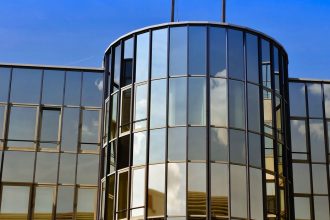Building Tomorrow: How Renewable Materials are Revolutionizing Real Estate
As global awareness of environmental issues grows, the real estate industry stands at the forefront of a pivotal transformation. The shift towards sustainable development is not merely a trend; it is a necessity for the preservation of our planet and the health of future generations. Central to this transformation is the adoption of renewable materials, which are redefining the standards of green building design and practice. Initiatives like the Living Building Challenge (LBC) serve as guiding frameworks in this movement, promoting innovative practices that transcend traditional construction paradigms.
The Importance of Renewable Materials
Renewable materials—those that can be replenished naturally or sourced sustainably—are instrumental in reducing the environmental footprint of construction. Wood, bamboo, hempcrete, cork, straw bales, and recycled materials are some examples of renewable resources being utilized effectively in architecture and construction. Unlike conventional materials such as concrete and steel, which often require significant energy expenditure for extraction and processing, renewable materials tend to have a lower embodied energy and can contribute positively to the building’s lifecycle.
The Living Building Challenge: A Beacon of Sustainable Design
The Living Building Challenge, developed by the International Living Future Institute, is one of the most rigorous sustainable building certifications available today. It demands that buildings meet the "Living Building" criteria, which includes achieving net-zero energy, net-zero water, and cultivating a positive impact on the surrounding environment. This framework encourages architects and developers to embrace renewable materials and innovative design principles.
Key Features of the Living Building Challenge:
- Place: Develop in harmony with the site, protecting the local ecology while enhancing its natural resources.
- Water: Capture and treat water on-site, creating structures that use little to no water from municipal sources.
- Energy: Design buildings to produce more energy than they consume, promoting the use of renewable energy sources like solar and wind.
- Health and Happiness: Ensure spaces are healthy by utilizing non-toxic materials, maximizing natural light, and promoting well-being.
- Materials: Use materials that are responsibly sourced, healthy, and free of harmful chemicals.
Over the years, various projects have achieved LBC certification by creatively employing renewable materials and sustainable practices, demonstrating that luxury and sustainability can coexist.
Innovative Practices in Green Building Design
-
Cross-Laminated Timber (CLT): CLT is a renewable material gaining traction in modern architecture. It has a lower carbon footprint compared to traditional construction materials and is highly versatile. An excellent example is the T3 building in Minneapolis, which showcases a CLT structural system that minimizes carbon emissions and provides warm, inviting interiors.
-
Hempcrete: As a biocomposite material made from the hemp plant, hempcrete serves as an insulating infill that contributes to energy efficiency while sequestering carbon. Projects like the Hemporium Project in the UK illustrate its potential, combining climate resilience with aesthetic appeal.
-
Reclaimed Wood: Utilizing reclaimed wood from old barns, factories, and other structures not only reduces waste but also adds historical character and beauty to new constructions. The Howard Terminal Project in Oakland, California, incorporates reclaimed materials to enhance the project’s sustainability while maintaining the region’s heritage.
-
Green Roofs and Living Walls: These features contribute to urban biodiversity and mitigate heat island effects. They can be constructed using renewable materials like lightweight soil and native vegetation, encouraging a thriving ecosystem. The Pixel Building in Melbourne, known for its eco-friendly systems, features a green roof designed for stormwater management and biodiversity.
- Passive Design Strategies: Beyond materials, innovative architectural strategies such as optimizing natural ventilation, daylighting, and thermal mass are crucial. The Bullitt Center in Seattle is a prime example, leveraging its orientation and advanced glazing to minimize energy requirements while maintaining high comfort standards.
The Future of Sustainable Real Estate Development
The intersection of renewable materials and sustainable design practices is not merely about compliance with green certifications; it’s about reimagining the role of the built environment in supporting ecological health. Developers increasingly recognize the financial benefits associated with sustainable buildings, such as reduced operating costs, increased property values, and the ability to attract tenants who prioritize sustainability.
Furthermore, as consumers become more environmentally conscious, buildings that exemplify these principles are more likely to succeed in the market. Demand is shifting towards properties that not only fulfill basic needs but also align with broader ecological goals.
Conclusion
As we move towards a more sustainable future, the role of renewable materials in real estate development will be increasingly critical. Initiatives like the Living Building Challenge provide both direction and inspiration, challenging the industry to innovate and lead by example. By embracing renewable materials and sustainable design, the real estate sector is not only contributing to environmental stewardship but also redefining the possibilities of what buildings can achieve for their occupants and the planet alike. Together, we can build a tomorrow that respects nature and embraces a sustainable legacy.







